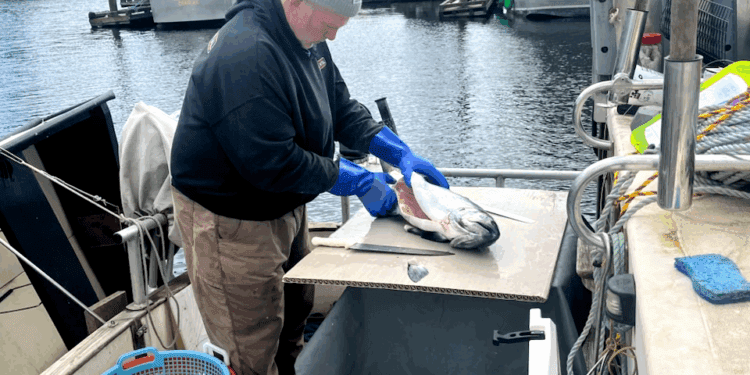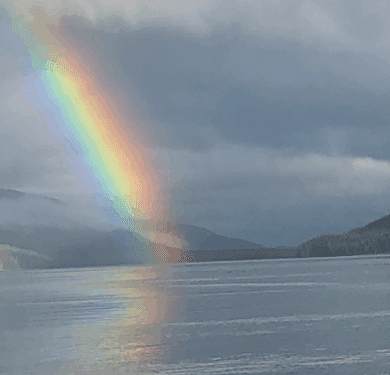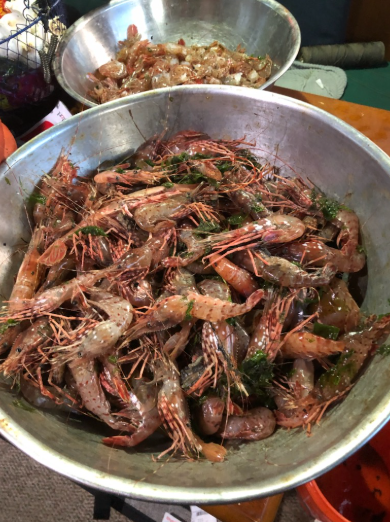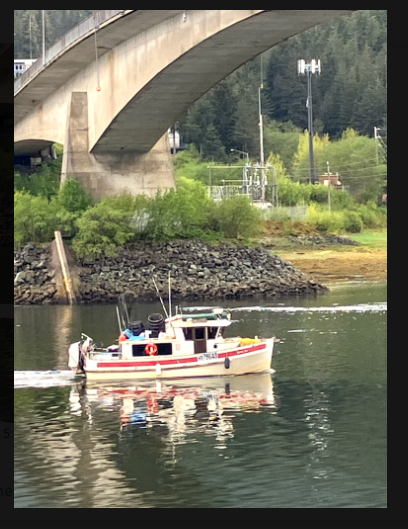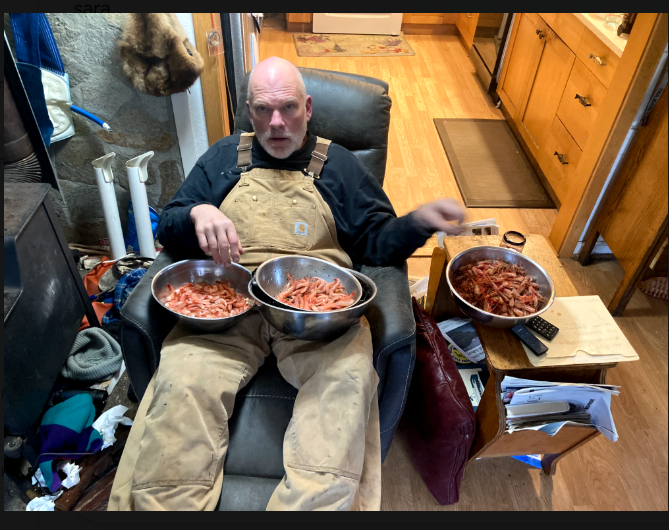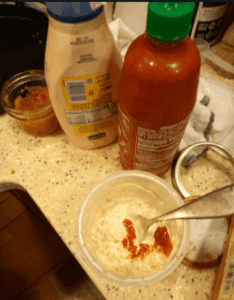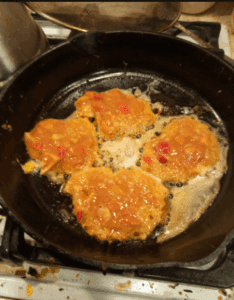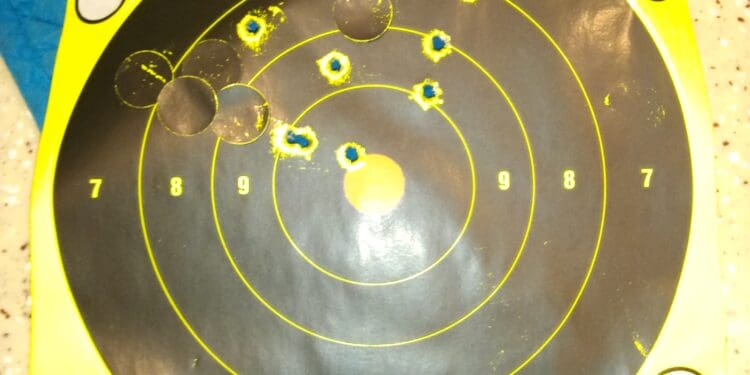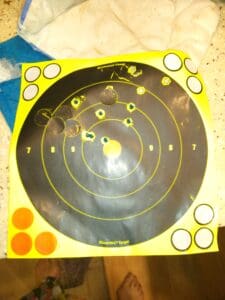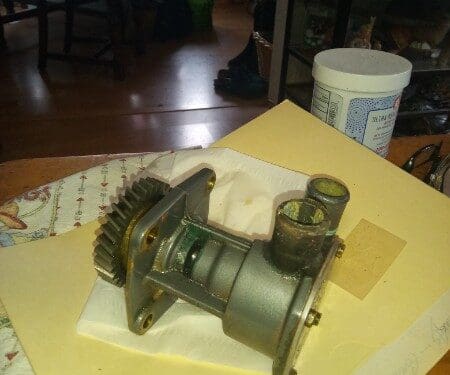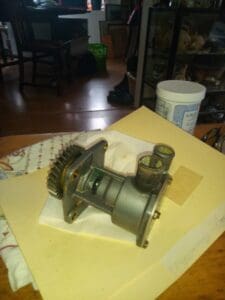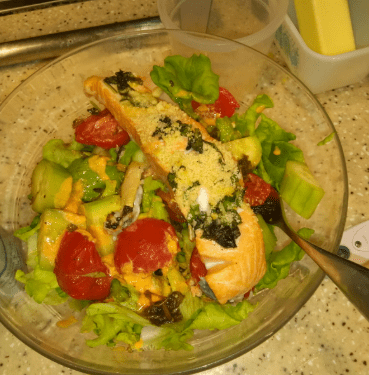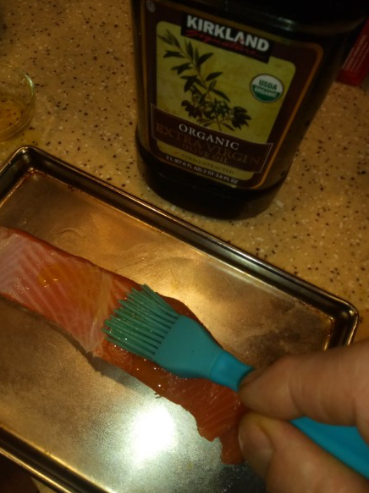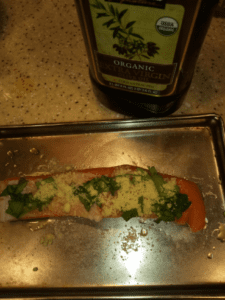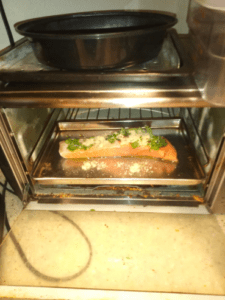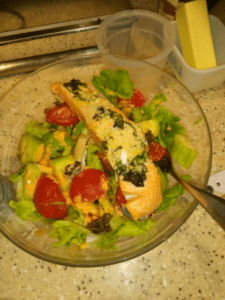Roy came down from Haines fishing with me for the first time this past week. It was great to be hosting him fishing after all the times he’s hosted me fishing in the Chilkat River and picking the cherries from his trees. He bought his house from the parents of a long time teacher now here in Craig, and the parents live in Hollis.
Things didn’t start out so good. Roy had a short layover during a plane change in Juneau, and when the plane he transferred to got to Klawock, his luggage did not make it with him. The luggage would arrive on the evening flight, so we couldn’t leave town to start our fishing trip as planned, and I’m thinking – well, we’ve lost a day of fishing.
Doug was walking by the high school as we returned to town from the airport, and I stopped to see if he’d like a ride. He jumped in. He had left his rig at the mechanic at the launch ramp, and was walking home. When we told him our predicament, he said we should fish near town at a couple spots he’d recently caught fish. Why didn’t I think of that? He told me of one spot that I knew of, but didn’t even think of, fishing near town, so we headed there first. As usual, a setback leads to a lucky encounter and some new fishing information.
Roy and I fished the 3 different spots from Doug’s intel. At the last spot- the closest spot to town – we had one on, it came right to the surface, and spit the hook. We got Roy’s luggage that evening, jumped on the boat, and headed for an anchorage about 2 hours from town. A humpback whale cruised our anchorage.
Next morning I was up shortly after first light, and started my morning routine. I put the coffee peculator on to boil, removed the cushions from the galley table I sleep on and returned it to normal table height. I recently replaced the table with two telescopic legs that came with the boat with a coffee table I got on craigslist. I removed the legs, and installed a center leg that goes up and down with a hand crank. The telescopic legs on the original table was difficult to lift up to table height, and the new hand crank leg has been a welcome success.
I then checked the oil and coolant on the Yanmar, started the engine, and went to the bow to pull the anchor. When I returned to the helm, Roy was up, dressed, and ready to go. We motored the short distance to our fishing drag, poured the finished coffee into two thermoses I got at the St Vincent Depaul Thrift store in Juneau, had our first of many cups of coffee, and soon had the trolling gear out.
We caught a couple nice king salmon, a couple unexpected chicken halibut, and a big black rock fish we had for dinner the first day. That sure sets up the week nicely and puts me at ease, knowing Roy has already got a nice catch of fish to take home, even if we caught nothing the rest of the week.
The king salmon are bigger this year. The first increase in size I’ve seen in 20 years. I’m not sure yet what to make of it, but I like it.
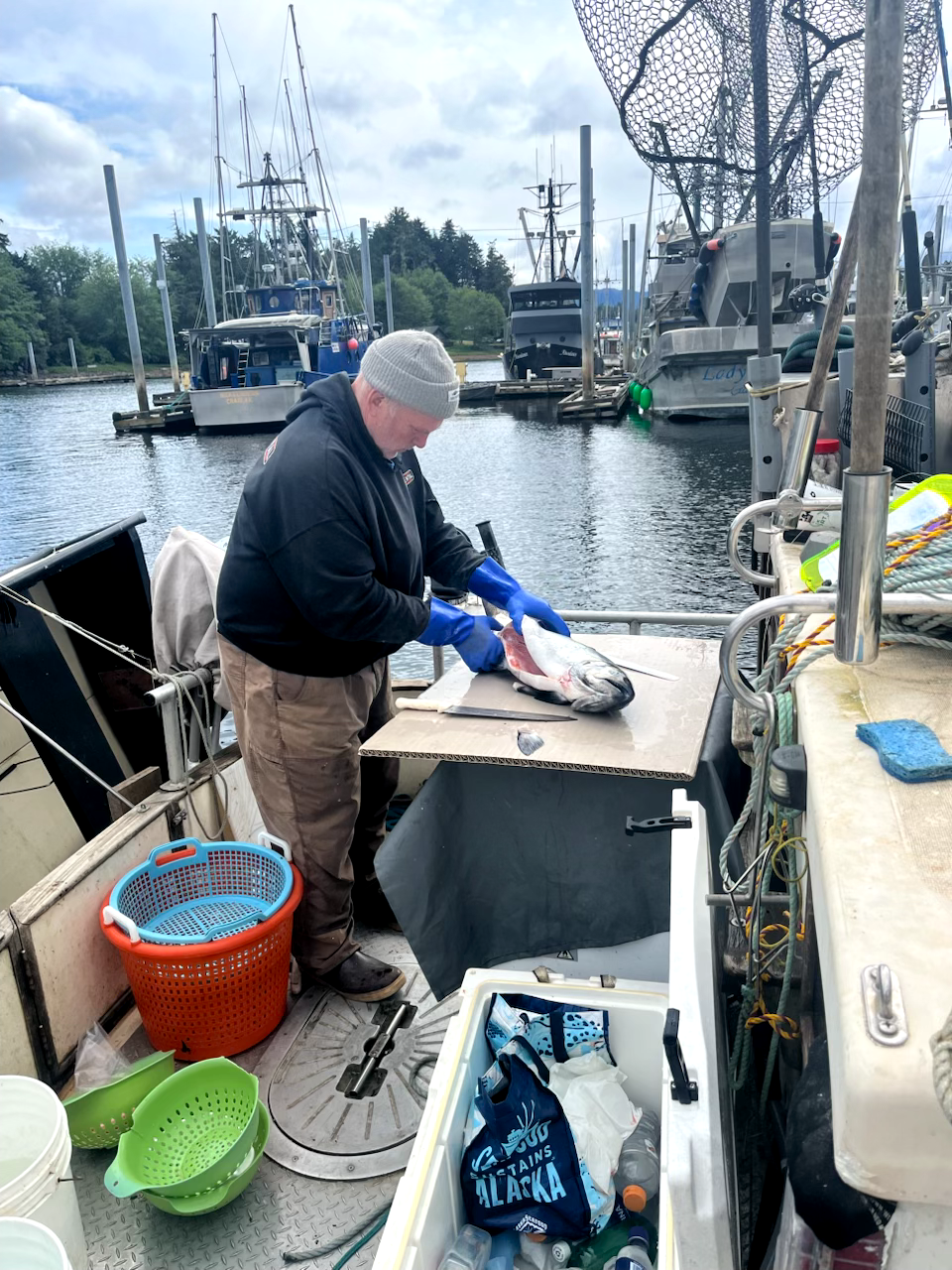
We were up early fishing the next day. It’s great to have early risers aboard, as I love fishing the early morning. The winds came up later in the morning. After several passes, we caught a chicken halibut but no king salmon. We moved to my other favorite spot, about an hour away. The winds were up there, too, from the opposite direction (I don’t know how this is possible, but it is!) and we caught no salmon. We continued on to the inside waters and fished the Prince of Wales Island shore. More of nothing there, and we headed for the harbor.
We headed out the next day mid morning and were at fishing spot number 2 by mid day. We caught two nice kings by late afternoon, and anchored up. A whale that seemed to homestead the mouth of the anchorage was back feeding. The whales in the area have some specialized feeding behavior I’ve not seen around Juneau. This whale would seem to swirl around sideways, with first a pectoral fin out of the water, followed by the tip of a tail. Then the whale would stand on its head, with his tail out of the water, and slowly tip over backwards. From the sonar, it looked like the whales were feeding on masses of krill, as we also saw floating krill cases.
On day 5, we were fishing about 5 am on a beautiful partly cloudy morning. With not much luck on the electric blue spoons, I recalled seeing herring in the kings I’d cleaned, so I put a King Kandy cut-plug lure on one pole, and the blue spoon on the other. We caught two kings by mid-day, both on the King Kandy. I also lost what I’m sure was a bigger halibut, which cut the line at the precious King Kandy. We thought we were hung yet again on kelp, and Roy put the engine in neutral so I could pull the wad of kelp in. After allowing me to yard it up like a pile of kelp, the fish started to pull. It was fighting like a halibut, and it cut the line right at the lure before I got a look at it. We tried for a third fish all afternoon, but no action. Roy idled us right to the mouth of our anchorage, and said pull the lines. When I hauled in one rod, I saw the other rod bouncing and thought we had shallowed up and that the cannon ball was bouncing on the bottom. I grabbed the rod and started cranking up the down rigger to get off the bottom. Then realized we had a fish on, so called Roy back to help. We landed Laura’s proxy fish, which will make her happy. We had for dinner what we ate every night after – fried king salmon collars and green salad with red onions, bell peppers, and a European white cheese I love from Costco.
The next morning, we got our first king about 545 am. Friends showed up in a couple boats an hour later. They fished a few hours after we caught our fish, then left for better fishing elsewhere. We fished the rest of the day with the whales and the sunshine, but no more keepers. We released a shaker king and beautiful ocean-bright chum salmon.
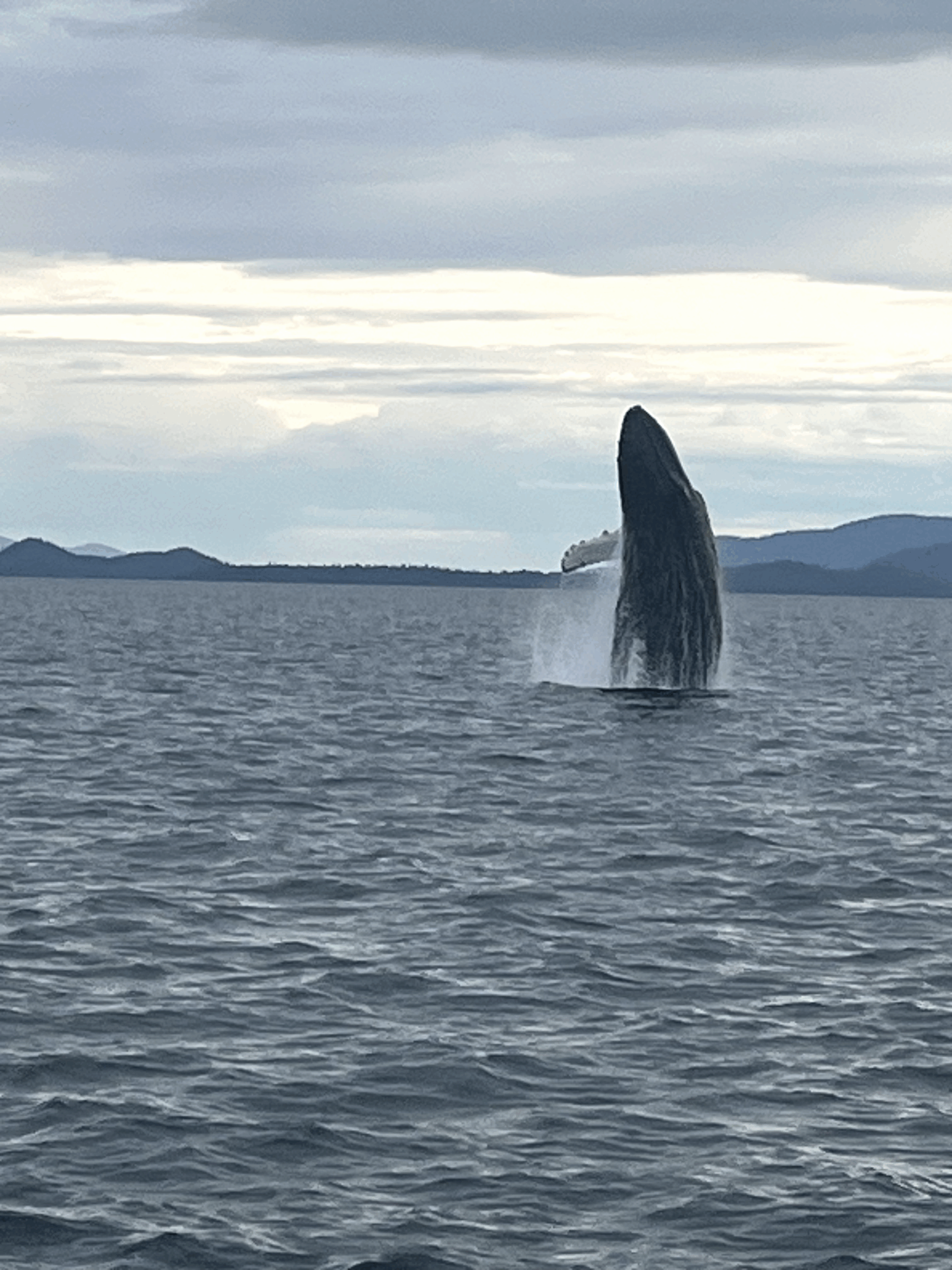
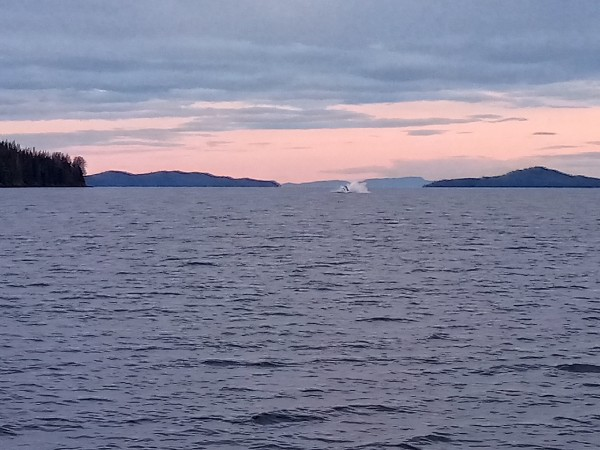
The NOAA forecast for the waters just west of us, on the open ocean, for our last day of fishing showed the winds would pick up. The WINDY app showed winds at 8 kts, increasing to 12 kts where we were fishing. We got up extra early to get in a solid day of fishing, knowing we’d leave midday for town. We caught the first king about 2 hours later at 630 am, and it was our biggest of the season at over 21 lbs. I saw the first needle fish of the season in this king, along with some partially digested herring. I put the blue spoon back on one rod after seeing the needle fish, but we caught no more fish when we pulled the gear at 1145 am and headed for town ahead of the weather.
Back ashore, we enjoyed our first showers in a week, and had a dinner of elk burgers and socialization with Brian and Ellen and their house, along with Howard and Michelle.
Up bright and early again to get fish boxes packed, and Roy on the plane to Ketchikan and on to Juneau, where he’d take his son’s truck back on the ferry to Haines. I also sent Laura her fish on the plane to Juneau. A great start to the season.

